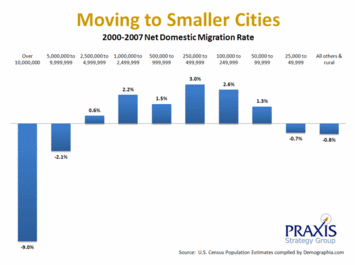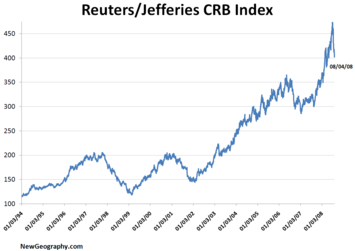Over half of the nation lives in metropolitan areas of more than 1 million people, but bizjournals.com suggests many may indicate another preference:
Yet a substantial number of these residents of big cities and inner-ring suburbs don't have their hearts in it. They would prefer to live on the suburban fringe or in small-town America, as repeatedly shown by surveys during the past decade.
Bizjournals just released rankings of micropolitan areas. Micropolitan areas are urbanized small cities where the central city population is between 10,000 and 50,000. Like metropolitan areas, micropolitans are still defined by county and commuting geography, so many are larger than 50,000 overall.
 Because they offer self contained employment centers, these types of places may prove to be even more appealing as energy costs escalate. Recent domestic migration trends show that small and medium sized metro regions are attracting the most new residents.
Because they offer self contained employment centers, these types of places may prove to be even more appealing as energy costs escalate. Recent domestic migration trends show that small and medium sized metro regions are attracting the most new residents.
Check out the rankings list, it's odd to note that most of the top 20 are in northern climates. Not surprisingly, small college towns dominate the rankings, offering a source of stable professional jobs and the added vitality of a new crop of 20-somethings each year.














